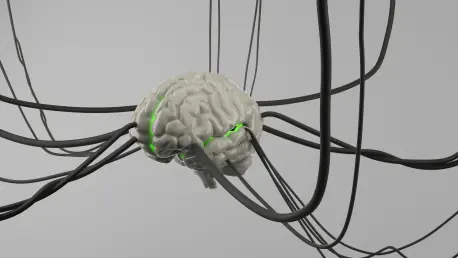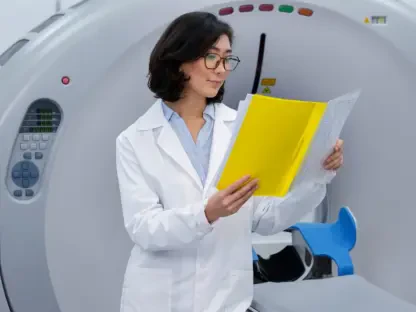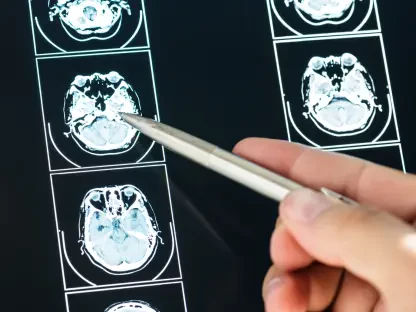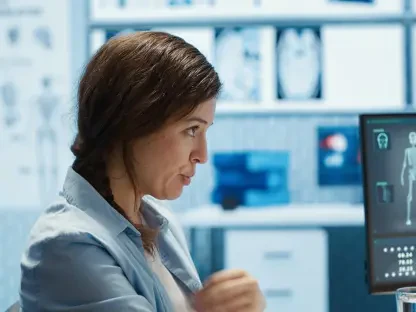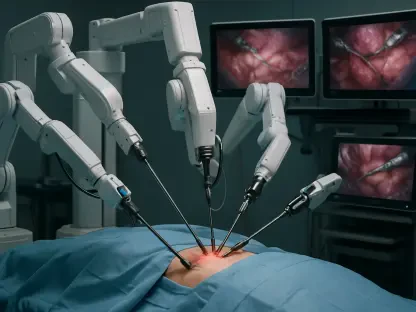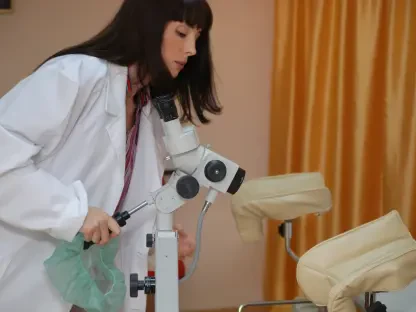In this captivating interview, we delve into the innovative world of Precision Neuroscience, exploring their groundbreaking advancements in brain-computer interface technology. James Maitland, an expert in robotics and IoT applications in medicine, provides fascinating insights into the company’s recent achievements and their vision for the future of neural technology. Discover the intricate details of their FDA-cleared electrode array, the impressive clinical trials, and how they plan to stand out in a competitive landscape filled with high-profile rivals.
Can you explain the significance of receiving 510(k) clearance from the FDA for your electrode array?
Receiving the 510(k) clearance from the FDA is a significant milestone for us, marking the first instance that a company developing next-generation wireless brain-computer interfaces has achieved this level of regulatory approval. It provides us with the credibility and the confidence to offer our technology for wider clinical application, particularly for procedures that last up to 30 days. This clearance not only affirms the safety and efficiency of our electrode array but also opens the door for us to commercialize it, which is crucial for advancing our mission to improve patient care through innovative brain-computer interface solutions.
What makes your electrode array different from traditional brain mapping technologies?
Our electrode array, the Layer 7 Cortical Interface, distinguishes itself through its design and functionality. Unlike traditional methods that may require more invasive procedures, our system is thin and sits delicately on the cerebral cortex with just a small incision needed in the skull. This reduces the risk and complexity associated with brain mapping, ensuring that patients can benefit from advanced technology without the drawbacks commonly associated with traditional, more intrusive devices.
How does the Layer 7 Cortical Interface work, and what are its unique features?
The Layer 7 Cortical Interface is designed to interface with the cerebral cortex seamlessly. When placed correctly, it captures high-resolution neural data through its microelectrodes. One of its unique features is its thinness, which allows for a less invasive implantation process. This design enables the array to remain in place for up to 30 days, greatly enhancing its utility during various medical procedures. As a result, surgeons can access critical brain mapping information in real-time, aiding in precise surgical interventions.
Could you elaborate on the in-human clinical trials you conducted? What were the main objectives and outcomes?
Our in-human clinical trials began in June 2023, involving 37 patients. The central objective was to test the safety and efficacy of our implant during surgical procedures, such as brain tumor removals. The results were promising; our device successfully provided surgeons with vital real-time data to facilitate better surgical outcomes. These trials validated the device’s functionality in complex medical scenarios and set the foundation for its integration into routine operative practices.
What are your plans for using the electrode array in intraoperative brain mapping?
With FDA clearance, we intend to integrate our electrode array extensively into intraoperative brain mapping practices. Our aim is to enable surgeons to make more informed decisions using high-resolution neural data captured directly from the cortical interface. This can significantly enhance the precision of surgeries that require intricate brain mapping, such as tumor resections, ultimately improving patient outcomes through more targeted and effective interventions.
How do you envision building and utilizing a repository of high-resolution neural data?
Creating a repository of detailed neural data is integral to our strategy. We plan to accumulate data from various surgeries and procedures to develop a comprehensive database. This repository will serve as a crucial resource for training sophisticated algorithms, which can be applied to enhance our brain-computer interface technology. By leveraging this data, we aim to drive innovations that could transform how neurological conditions are treated, with potential applications far beyond current capabilities.
What kind of algorithms are you planning to train with this neural data, and what applications do you foresee?
We are looking to train algorithms that can decode neural signals with high precision and apply them in controlling robotic limbs or assistive devices. Such applications can significantly benefit individuals with mobility impairments by providing more intuitive and seamless control over prosthetic devices. Additionally, there’s potential for developing software that aids in diagnostics or monitors neural health dynamically, offering an expansive range of medical uses that can adapt to the needs of patients.
Can you walk us through the process of how your electrode array assists surgeons during procedures like brain tumor removal?
During brain tumor removals, precision is crucial. Our electrode array assists by providing real-time mapping of brain activity, enabling surgeons to identify critical functional areas of the brain with clarity. This information helps delineate the tumor from vital tissues, reducing the risk of damaging important neural functions. With our device, surgeons can navigate more confidently, ensuring that they can maximize the effectiveness of the surgery while minimizing potential complications.
What challenges did you face during the development phase of your technology, and how were they overcome?
One of the notable challenges was perfecting the design to ensure minimal invasiveness while maintaining high accuracy in data collection. Achieving the optimal balance required extensive research and iteration. We overcame these hurdles through rigorous testing and collaboration with leading neuroscientists to refine the features of the electrode array. Continuous feedback from clinical trials was also pivotal in addressing real-world challenges, guiding us to enhance the robustness and functionality of our device.
How do you manufacture the cortical array, and what are the benefits of owning and operating your own manufacturing facility?
We manufacture the cortical array in a dedicated facility that we own and operate, allowing us to maintain stringent quality control across all production stages. This in-house setup enables rapid innovation cycles and customization to meet specific research needs or adapt to unique clinical requirements. Moreover, it ensures that we can quickly implement updates and improvements based on the latest scientific insights or regulatory standards, keeping us agile in a competitive market.
Could you give us an overview of your company’s journey from its founding in 2021 to achieving FDA clearance?
Our journey began in 2021 with a vision to revolutionize neural interfaces. Co-founded by industry veterans, including Benjamin Rapoport, our early focus was on innovation and building a solid foundational team. We invested heavily in research and development, creating prototypes and rigorously testing them in clinical settings. Over the next few years, we steadily advanced our technology, culminating in the successful clinical trials this year and, ultimately, receiving FDA clearance—each step a testament to our commitment to excellence.
As a founder and a former member of Neuralink, how has Benjamin Rapoport’s experience influenced Precision Neuroscience’s approach?
Benjamin Rapoport’s experience at Neuralink has been instrumental in shaping Precision Neuroscience’s approach, particularly in navigating the complexities of brain-computer interface development. His insights into interdisciplinary collaboration and cutting-edge technology integration have pushed us to maintain a forward-thinking mindset. We’re able to draw from his experience in tackling technical challenges and regulatory landscapes, ensuring our solutions are not only innovative but also clinically viable and aligned with future medical needs.
How does your technology compare to that of competitors like Neuralink and Synchron?
While we share common goals with our competitors, our focus on a less invasive, practical approach sets us apart. Our electrode array offers the convenience of minimal surgical impact without compromising on performance. We are committed to advancing our technology with a streamlined pathway to market, supported by our self-sufficient manufacturing capabilities and in-depth clinical feedback. This allows us to differentiate ourselves with a product that is immediately applicable in a variety of clinical settings.
What is the impact of having rivals backed by high-profile investors like Elon Musk, Jeff Bezos, and Bill Gates? How do you differentiate your company in such a competitive environment?
Competing against companies with high-profile backers can indeed be challenging, as it brings intense scrutiny and high expectations. However, we differentiate ourselves by focusing deeply on creating clinically viable technologies that are affordable and accessible. Our strength lies in understanding the practical needs of medical professionals and patients alike, ensuring that our solutions are not only cutting-edge but also easy to integrate into existing healthcare infrastructures.
What are the next steps for Precision Neuroscience following this FDA clearance?
Following the FDA clearance, our next steps include scaling up the production of our electrode arrays to meet increasing demand and expanding our partnerships with healthcare institutions for broader clinical adoption. We’re also keen on furthering our research initiatives to progressively enhance our brain-computer interface capabilities. Strategic collaborations with other industry leaders will be crucial as we navigate new opportunities for innovation and deployment across diverse medical fields.
How do you see the future of brain-computer interfaces developing in the next five to ten years?
The next five to ten years in the realm of brain-computer interfaces will likely be transformative. I foresee significant advances in both the technology’s sophistication and its accessibility to patients. As our understanding of the brain deepens and data from neural interfaces becomes more comprehensive, we’ll see applications that extend beyond assistive devices—potentially including seamless human-machine collaboration in daily life. Close partnerships between technology firms, medical professionals, and regulatory bodies will be key to realizing these possibilities and ensuring that ethical considerations are met.
